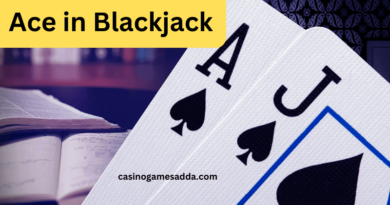Cards in Blackjack: A Comprehensive Guide
Blackjack, also known as 21, is a popular casino card game played by millions of people all around the world. The objective of the game is to beat the dealer by having a hand value of 21 or closest to it without going over. To achieve this, players must make strategic decisions based on the cards they are dealt and the dealer’s face-up card.
Understanding the Basics of Blackjack
Blackjack is played with one or more decks of standard playing cards, each containing 52 cards. The cards are ranked as follows: Ace is worth 1 or 11 points, face cards (King, Queen, and Jack) are worth 10 points, and all other cards are worth their face value.
The Different Types of Cards in a Blackjack Deck
In blackjack, a standard deck of playing cards is used, and there are four suits: clubs, diamonds, hearts, and spades. Each suit contains 13 cards, numbered from 2 to 10, with face cards (Jack, Queen, and King) worth 10 points each and an Ace worth either 1 or 11 points, depending on the player’s hand.
It’s important to note that the value of the Ace card can change throughout the game, depending on the player’s hand. For example, if the player has a hand totaling 11 points, the Ace will be counted as 11. However, if the player hits and draws another card that would push the total over 21, the Ace will automatically revert to a value of 1.
How the Value of Cards Affects the Outcome of a Hand
The value of the cards in a player’s hand plays a crucial role in determining the outcome of each hand in blackjack. The objective of the game is to get a hand total that is higher than the dealer’s hand but not exceeding 21 points.
If the player’s hand exceeds 21 points, the player loses the hand, regardless of the value of the dealer’s hand. On the other hand, if the player’s hand is equal to or less than 21, the outcome will depend on the value of the dealer’s hand. If the dealer busts (goes over 21 points), the player wins the hand. If both the player and the dealer have hands of equal value, the hand is a tie, and the player’s bet is returned.
The Importance of Card Counting in Blackjack
One strategy that experienced blackjack players use to gain an edge over the house is card counting. Card counting is the practice of keeping track of the ratio of high cards (10s and face cards) to low cards (2 to 6) in the deck. This information can then be used to make more informed decisions about the probabilities of drawing a particular card.
For example, if there are a high number of high cards left in the deck, the player knows that there is a greater chance of drawing a 10-point card, which would increase the chances of busting. Conversely, if there are a high number of low cards left in the deck, the player knows that the chances of getting a strong hand are higher.
It’s important to note that card counting is not illegal, but it is frowned upon by many casinos. Some casinos will even ban players who are suspected of counting cards.
The Rules of the Game
In Blackjack, each player is dealt two cards and must decide whether to “hit” (take another card) or “stand” (keep their current hand). The dealer must follow a strict set of rules dictating when they must hit and when they must stand.
If the player’s hand exceeds 21, they “bust” and lose the game, regardless of the dealer’s hand. If the dealer busts, all remaining players win. If neither the player nor the dealer busts, the hand closest to 21 wins.
Strategy and Tactics
There are several strategies and tactics that players can use to increase their chances of winning in Blackjack. For example, basic strategy suggests that players should always hit on hands worth less than 12 and always stand on hands worth 17 or more. Players should also consider the dealer’s face-up card when making decisions, as certain cards can increase or decrease the chances of busting.
Another important aspect of Blackjack strategy is card counting. Card counting is a technique that involves keeping track of the cards that have been played in order to determine the likelihood of certain cards being dealt. This information can then be used to make more informed decisions and increase the player’s chances of winning.
The Benefits of Playing Blackjack
Blackjack is not only a fun and exciting game, but it also offers several benefits to players. For example, it is a relatively low-risk game compared to other casino games, as the house edge is relatively low. Additionally, Blackjack can be a great way to improve your mental acuity, as it requires players to think critically and make strategic decisions.
The Risks of Playing Blackjack
Despite its many benefits, there are also some risks associated with playing Blackjack. For example, it can be easy to get carried away and lose more money than you intended. Additionally, card counting is illegal in most casinos, and players can face serious consequences if caught.
Conclusion
In conclusion, Blackjack is a fun and exciting game that offers players the chance to use strategy and tactics to increase their chances of winning. While there are some risks associated with playing Blackjack, it is a relatively low-risk game compared to other casino games. Whether you are a seasoned player or just starting out, we highly recommend giving Blackjack a try.
FAQs
- What is the objective of Blackjack?
The objective of Blackjack is to beat the dealer by having a hand value of 21 or closest to it without going over.
- How many decks of cards are used in Blackjack?
Blackjack is played with one or more decks of standard playing cards, each containing 52 cards.



